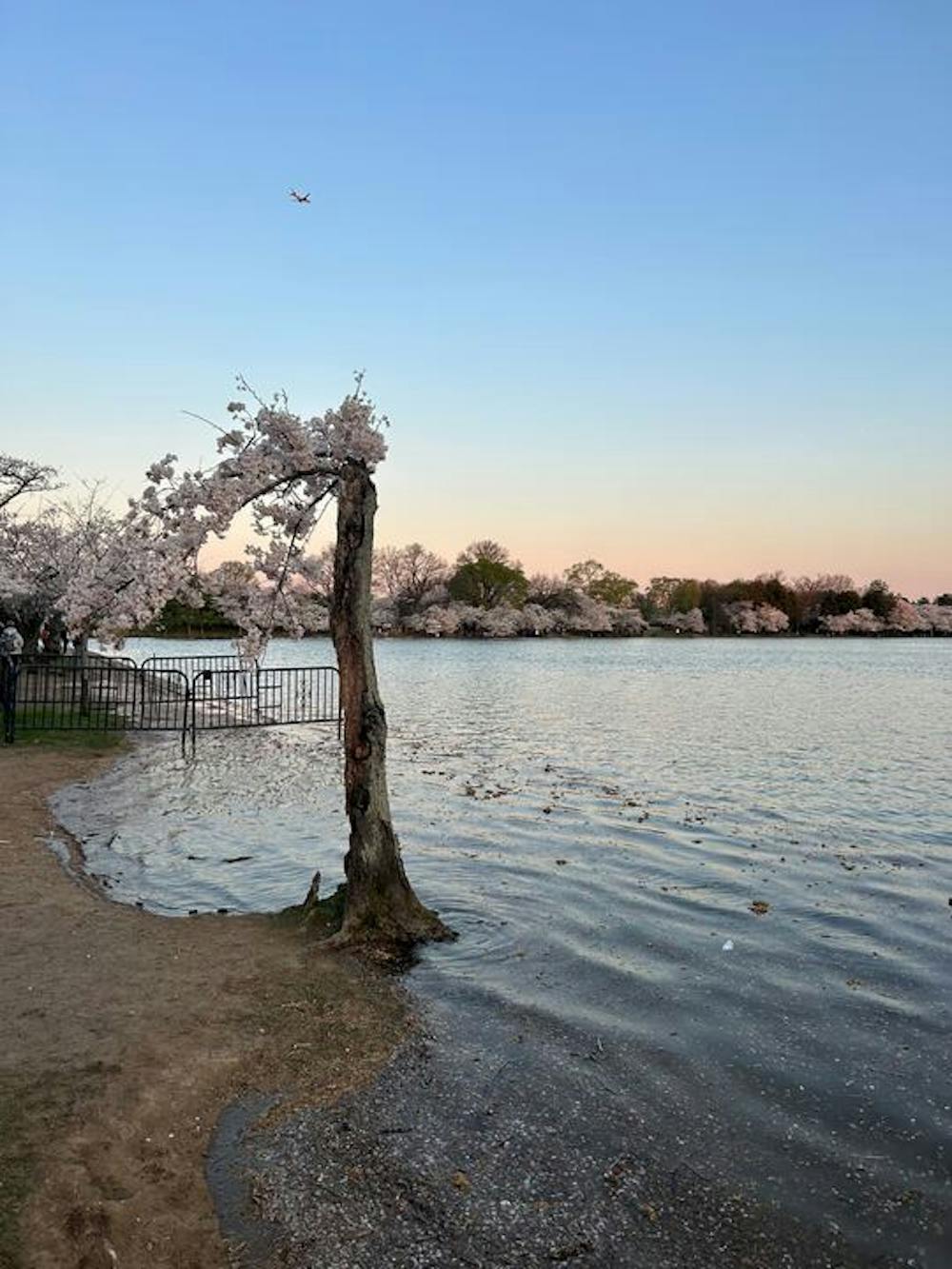The week of March 17 marked the second-earliest peak bloom for D.C.’s cherry blossoms on record, which, of course, include the beloved Stumpy.
The scraggly, sparse — but cherished — tree sits in the Tidal Basin near the Jefferson Memorial, where the brackish water of the Potomac River meets the shoreline. Its hollow bark and one protruding branch are a result of, “sun scalding, compacted soil, and fungi,” according to National Park Service spokesperson Mike Litterst via Washingtonian Magazine, all of which attribute to its so-called “mortality spiral.”
“There’s almost no way that tree should still be alive—the trunk is entirely hollowed out and he’s really nothing more than a little bit of bark and three branches,” Litterst said in the same article for Washingtonian. “Yet, every year, during peak bloom, despite everything else, he puts out these beautiful blossoms and I think a lot of people relate to that. It’s a story of perseverance through difficult times.”
Since a Reddit user called Stumpy, “as dead as (his) love life,” in 2020, the tree has welcomed an enclave of visitors and locals alike, becoming a small internet sensation.
Unfortunately, Stumpy’s reign will come to an end after this season.
Along with almost 100 other trees, Stumpy will be cut down in June as part of an effort to repair the Tidal Basin’s unstable grounds. The instability is a result of climate change-induced rising water levels, which are expected to increase in three-inch yearly increments to about a foot over the next 30 years in D.C.
Stumpy has always been scraggly and unstable, but the tree’sits health is further declining due to soil oversaturation around the Tidal Basin.
Cherry blossom trees are generally not able to withstand excessive moisture from sinking soil, which is worsened by frequent flooding. The man-made Tidal Basin, according to the National Park Service, is no longer able to effectively support the roots of even healthy trees, making Stumpy’s removal unfortunate, but necessary.
“It was nice to have this little tree hunched over with flowers blooming on him every year in the midst of the other ‘picture perfect’ cherry blossoms,” Parker Treichel, a freshman in the School of Communication, said. “He’s just a little guy trying his best.”
Stumpy’s removal is part of a $113 million renovation project by the National Park Service to improve the Tidal Basin grounds, both for the residing trees and visitors seeking the unique spray of pink blossoms each year. The project specifically aims to repair the degraded sea wall to prevent further flooding and is projected to take about three years, according to the Associated Press.
Stumpy is receiving a very fond farewell from the city in honor of its place in D.C. culture.
The hollow trunk and branches will serve as the mascot for the Credit Union Cherry Blossom 10 Mile and 5k at the National Mall from Apr. 5-7, the subject for an accompanying calendar created by Kevin Ambrose and a story of an underdog-turned-inspiration for years to come.
Along with the rest of the basin, Stumpy will stay put until early June and still has some flowers left after a late-March cold snap that slowed down the blooming process. Visitors are invited to say their goodbyes behind a gate on the Basin and celebrate the season with the ongoing Cherry Blossom Festival.
This article was edited by Clair Sapilewski, Sara Winick and Abigail Pritchard. Copy editing done by Luna Jinks and Charlie Mennuti.





